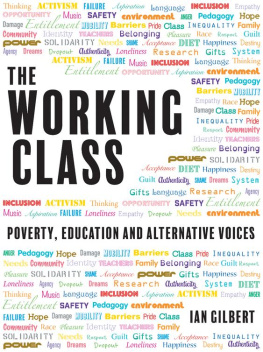Dennis Gilbert
Hamilton College





ix
xi
Dennis Gilbert holds a PhD from Cornell University and has taught at Cornell, the Universidad Catolica in Lima, Peru, and Hamilton College, where he is Professor of Sociology. He is also the author of Mexico's Middle Class in the Neoliberal Era (2007), Sandinistas: The Party and the Revolution (1990), and La Oligarquia Peruana: Historia de Tres Familias (1982).
 was 12 years old when the original version of The American Class Structure was being written in 1955. The author was Joseph Kahl, an unemployed Harvard PhD then living cheaply in Mexico. His book, which helped define the emerging field of social stratification, remained in print, without revision, for 25 years. It earned this long run by presenting a lucid synthesis of the best research on the American class system. Each study was lovingly dissected by Kahl, who conveyed its flavor, assessed its strengths and weaknesses, summarized its most significant conclusions, and explained how they were reached.
was 12 years old when the original version of The American Class Structure was being written in 1955. The author was Joseph Kahl, an unemployed Harvard PhD then living cheaply in Mexico. His book, which helped define the emerging field of social stratification, remained in print, without revision, for 25 years. It earned this long run by presenting a lucid synthesis of the best research on the American class system. Each study was lovingly dissected by Kahl, who conveyed its flavor, assessed its strengths and weaknesses, summarized its most significant conclusions, and explained how they were reached.
The American Class Structure was not a theoretical book. Kahl created a simple conceptual schema with a short list of key variables drawn from the work of Karl Marx and Max Weber. Kahl admitted that he had settled on this framework for the good and practical reason that it allowed him to draw together the results of disparate research reports. But the variables were interrelated, and Kahl believed that they tended to converge to create social classes in a pattern he called the American class structure. At the same time, he recognized that classes and class structure are abstractions from social reality-tendencies never fully realized in any situation but discernable when one stepped back from detail to think about underlying forces.
Sometime around 1980, Kahl invited me to collaborate on a new version of The American Class Structure. He was then professor of sociology at Cornell, and I had recently completed a PhD under his guidance. The book we published in 1982 encompassed a body of stratification research that had grown enormously in sophistication and volume since the 1950s. The American Class Structure: A New Synthesis consisted almost entirely of fresh material but preserved the general framework of the original edition and its analyses of classic studies of the American class system. That edition and two subsequent editions, which Kahl and I produced together, proved popular with a new generation of sociologists and sociology students.
But when our publisher asked for yet another edition, Kahl, who had retired to Chapel Hill, North Carolina, said he'd rather spend his time listening to opera than reading page proofs again. And since he would not be contributing to the new edition, he asked that his name be taken off the cover. Thus, the subsequent editions have been published under my name.
Although there is now only one official author, the authorial "I" reverts to "we" after this preface. Much of this book is the product of a long collaboration, and I am often at a loss to recall who wrote (or perhaps rewrote) a particular passage. Retaining the "we" of earlier editions seemed perfectly natural. That said, I want to stress that I bear sole responsibility for every word included in this edition.
I am, in particular, responsible for the theme that runs through the recent editions and is reflected in the revised title: In an Age of Growing Inequality. This theme was inspired by data on trends in earnings, income, wealth, and related variables that reveal a remarkably consistent pattern of rising class inequalities since the mid1970s. This pattern sharply contrasts with the broadly shared prosperity of the 1950s and 1960s. The text repeatedly returns to a deceptively simple question: Why is this happening?
Like its predecessors, the eighth edition of The American Class Structure is not an encyclopedic survey of stratification research, nor is it an exercise in class theory. It revolves around a short list of variables, largely derived from classical theory; emphasizes selected empirical studies; and focuses on the socioeconomic core of the class system. Gender and race are treated in relation to class, rather than as parallel dimensions of stratification. This approach reveals that the experience of class is inextricably bound up with gender and race. For example, studies show that a married woman's sense of class identity reflects her husband's job, her own job, and her attitude toward gender roles. Residential segregation by class is increasing in the United States, but so is segregation by race. One result has been the growth of affluent black neighborhoods.
For this edition, I have made revisions to nearly every chapter, adding fresh material on income, wealth, earnings, jobs, poverty, politics, college admissions, and other topics. I have especially focused on information that might tell whether the late 20th century trend toward growing inequality is continuing into the 21st century. As I have added new material, I have eliminated or summarized our coverage of older studies.
Two well-received features of recent editions have been retained. One is the glossary, added to make life easier for readers who are puzzled by Marx's use of the term ideology, uncertain about the exact meaning of net worth, or unable to recall how the text defined postindustrial society. Readers will find a list of relevant glossary terms at the end of each chapter. The other is the streamlined citation of government statistics. In order to produce a less cluttered text, I have eliminated most references to standard statistical series on income, poverty, employment, and related topics. On this feature, see the "Note on Statistical Sources" at the end of the book.
In earlier prefaces, Kahl and I thanked many friends, colleagues, and students whose help made The American Class Structure a better book. This edition has benefited from first-rate research assistance provided by Kate Speirs, PhD candidate at the University of Maryland, College Park.















 was 12 years old when the original version of The American Class Structure was being written in 1955. The author was Joseph Kahl, an unemployed Harvard PhD then living cheaply in Mexico. His book, which helped define the emerging field of social stratification, remained in print, without revision, for 25 years. It earned this long run by presenting a lucid synthesis of the best research on the American class system. Each study was lovingly dissected by Kahl, who conveyed its flavor, assessed its strengths and weaknesses, summarized its most significant conclusions, and explained how they were reached.
was 12 years old when the original version of The American Class Structure was being written in 1955. The author was Joseph Kahl, an unemployed Harvard PhD then living cheaply in Mexico. His book, which helped define the emerging field of social stratification, remained in print, without revision, for 25 years. It earned this long run by presenting a lucid synthesis of the best research on the American class system. Each study was lovingly dissected by Kahl, who conveyed its flavor, assessed its strengths and weaknesses, summarized its most significant conclusions, and explained how they were reached.